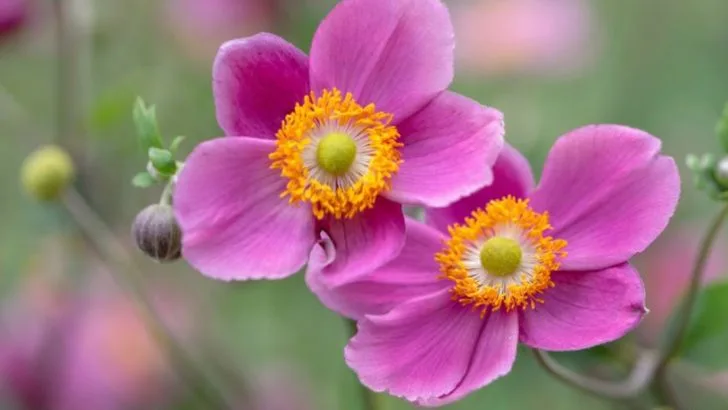Perennials are the backbone of a vibrant, low-maintenance garden, returning year after year to provide beautiful color and texture. Whether you’re looking to fill sunny borders, shady corners, or rocky pathways, the right selection of perennials can transform your yard into a stunning, ever-blooming oasis.
In this article, we highlight 22 must-have perennials that will bring seasonal color to every part of your landscape. From long-blooming favorites to drought-tolerant varieties, these plants will ensure your garden stays lively and full of charm. If you want a yard that thrives with minimal effort and maximum impact, these essential perennials are a perfect choice!
Echinacea (Coneflower)
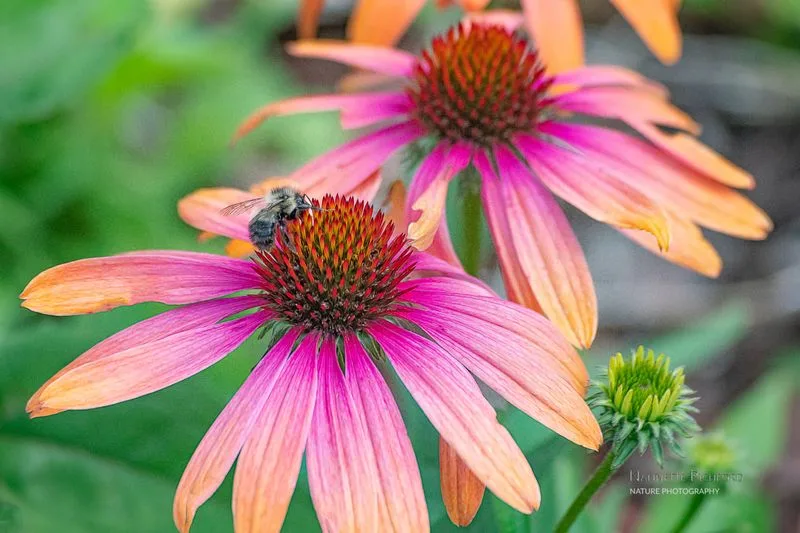
With vibrant petals that radiate out like a sunburst, these flowers bring a touch of wild beauty to gardens. Plant them in a sunny spot, and watch as they attract butterflies and bees with their nectar-rich blooms. Echinacea is drought-tolerant once established, making it a resilient choice for low-maintenance gardeners. Their long flowering season ensures a splash of color from summer to fall. Pair with ornamental grasses for a prairie-inspired look. Deadheading spent blooms will encourage more to flourish, ensuring your garden remains a lively haven for months.
Hosta
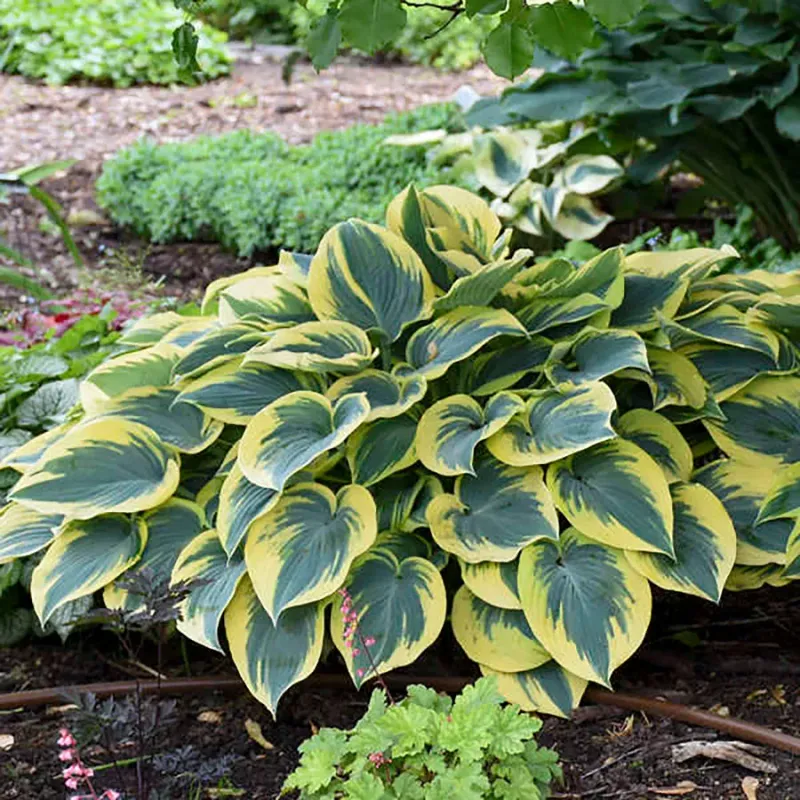
Large, sculpted leaves dominate this perennial, offering visual interest in shaded areas. Hosta comes in various sizes and colors, from deep greens to variegated whites and creams. These plants thrive in shaded gardens, providing a lush ground cover. Their tall flower spikes add vertical accents when in bloom during summer. Despite their preference for shade, hostas are surprisingly adaptable to different soil conditions. Consider interplanting with ferns for a textural contrast. Regular watering is key, especially in drier spells, to maintain their vigorous growth and lush appearance.
Lavender
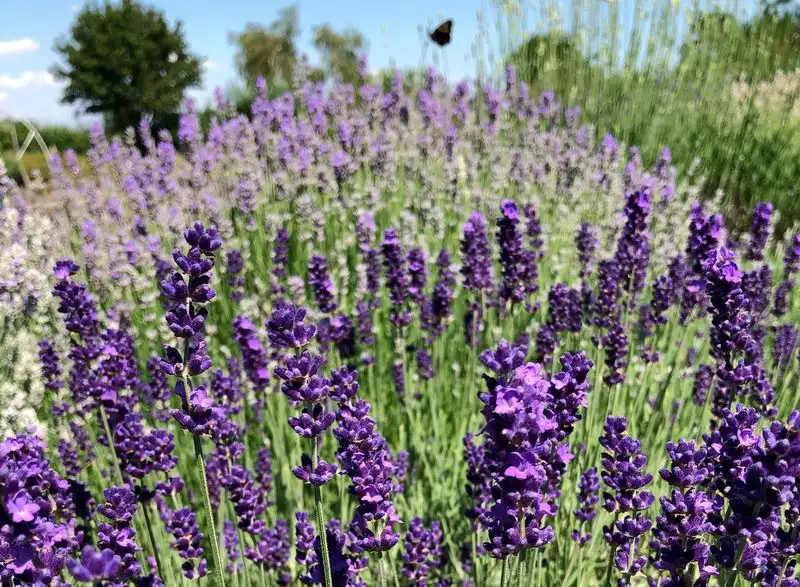
Known for its soothing fragrance and delicate purple blooms, lavender is perfect for sunny garden spots. The silvery foliage adds a touch of elegance, even when not in bloom. Lavender thrives in well-drained soil and requires minimal watering once established. Its fragrant blooms are perfect for attracting pollinators like bees. Pruning back after flowering keeps the plant compact and encourages a second bloom. Use lavender as a fragrant border or in containers on a sunny patio. The scent is also known to repel pests, making it a practical addition to any garden.
Daylily
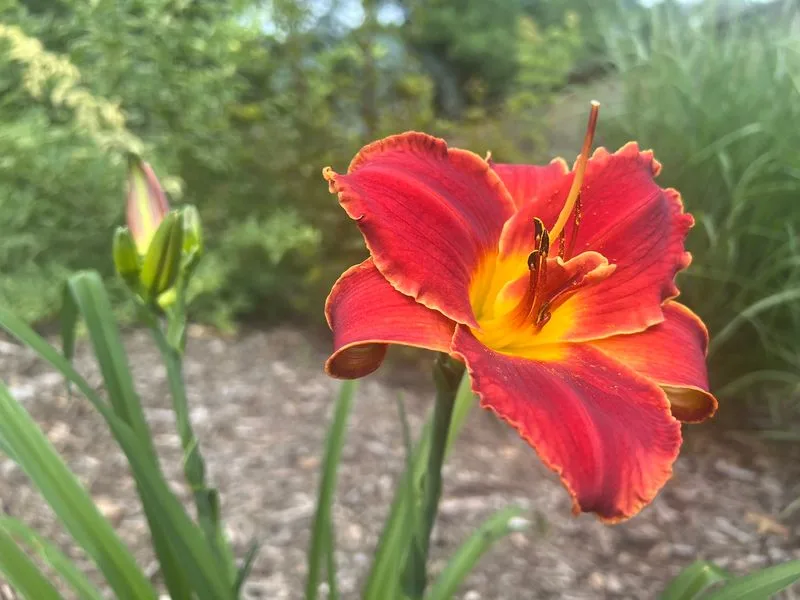
Every garden deserves the vibrant presence of daylilies. These hardy perennials are a gardener’s delight, offering a wide range of colors from bright yellows to deep reds. Plant them in well-drained soil, and they will reward you with a burst of blooms from early summer to fall. Each flower lasts only a day, but new ones continue to appear, ensuring a colorful display. Daylilies are perfect for mass planting or as stand-alone specimens. Regular division every few years will rejuvenate older clumps, keeping them vigorous and blooming profusely.
Black-eyed Susan
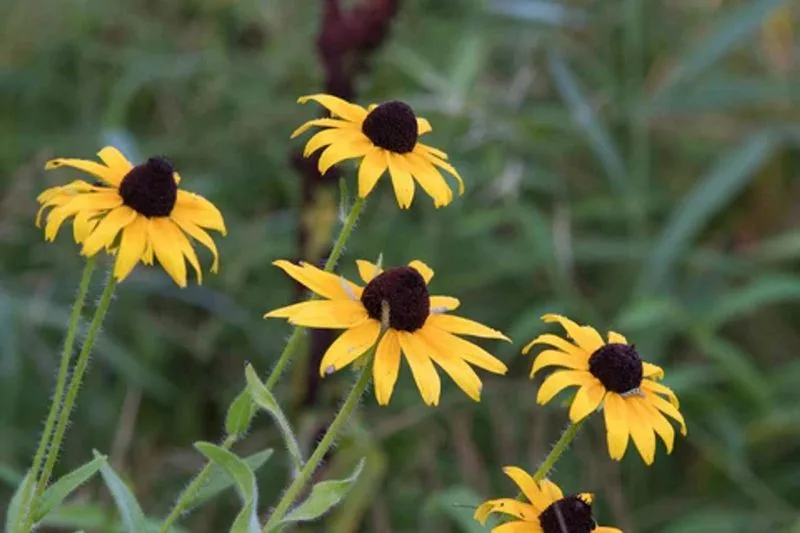
Sunshine in flower form, these perennials brighten any landscape. Black-eyed Susans are famous for their golden petals and dark centers, attracting butterflies throughout summer. Ideal for sunny borders, they require minimal care and are perfect for beginners. Their drought tolerance makes them suitable for various garden conditions. Pair with purple coneflowers for a striking contrast. Cutting back after flowering encourages a second bloom, offering extended seasonal color. These cheerful flowers are a staple in wildflower gardens, providing a bold splash of yellow against the green foliage.
Coral Bells
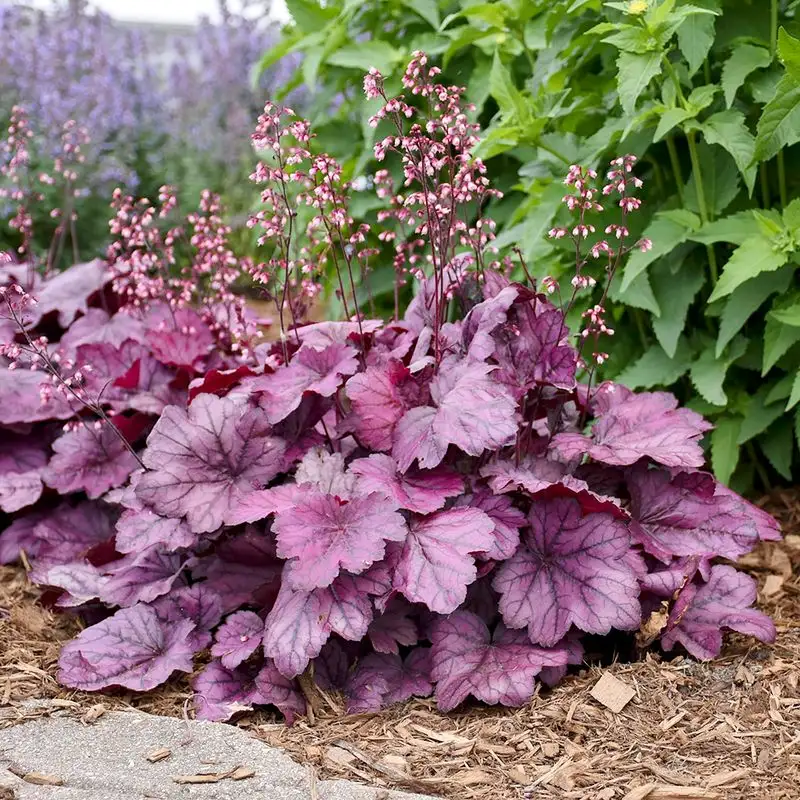
Delicate flowers and colorful foliage make coral bells a garden favorite. Their leaves come in shades of burgundy, purple, and green, offering year-round interest. Best planted in partial shade, they are ideal for adding texture and color to shady borders. During spring and early summer, they produce delicate, bell-shaped flowers that attract hummingbirds. Coral bells are low maintenance, requiring only occasional watering. Their evergreen foliage provides winter interest, making them valuable in all-season gardens. Use as edging plants or in containers for versatility and visual appeal.
Peony
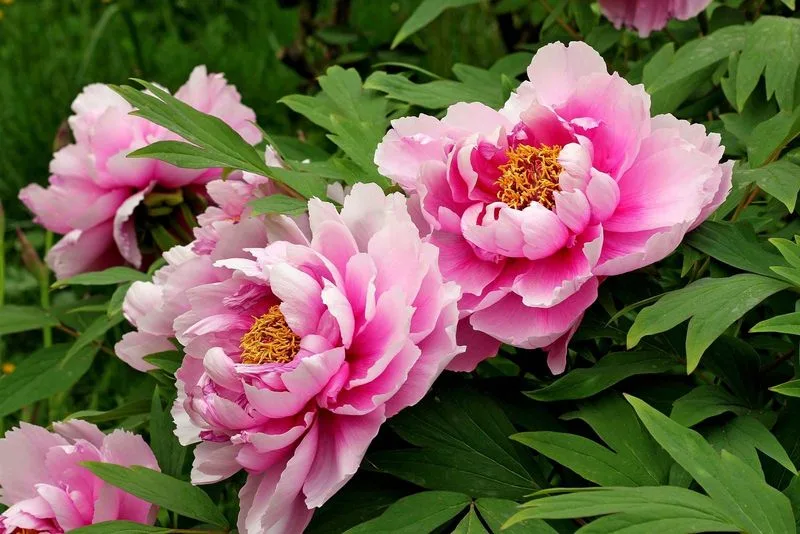
Few flowers can match the elegance of peonies. With their full, ruffled blooms, they add a touch of luxury to any garden. Peonies are long-lived perennials, thriving in sunny spots with well-drained soil. Their blooms are often fragrant, making them a delight for both the eyes and nose. Despite their lavish appearance, peonies are surprisingly easy to care for. Support stems as needed to prevent flopping. After blooming, their lush foliage remains attractive, adding structure to garden beds. Plant them as focal points or in mixed borders for timeless beauty.
Salvia
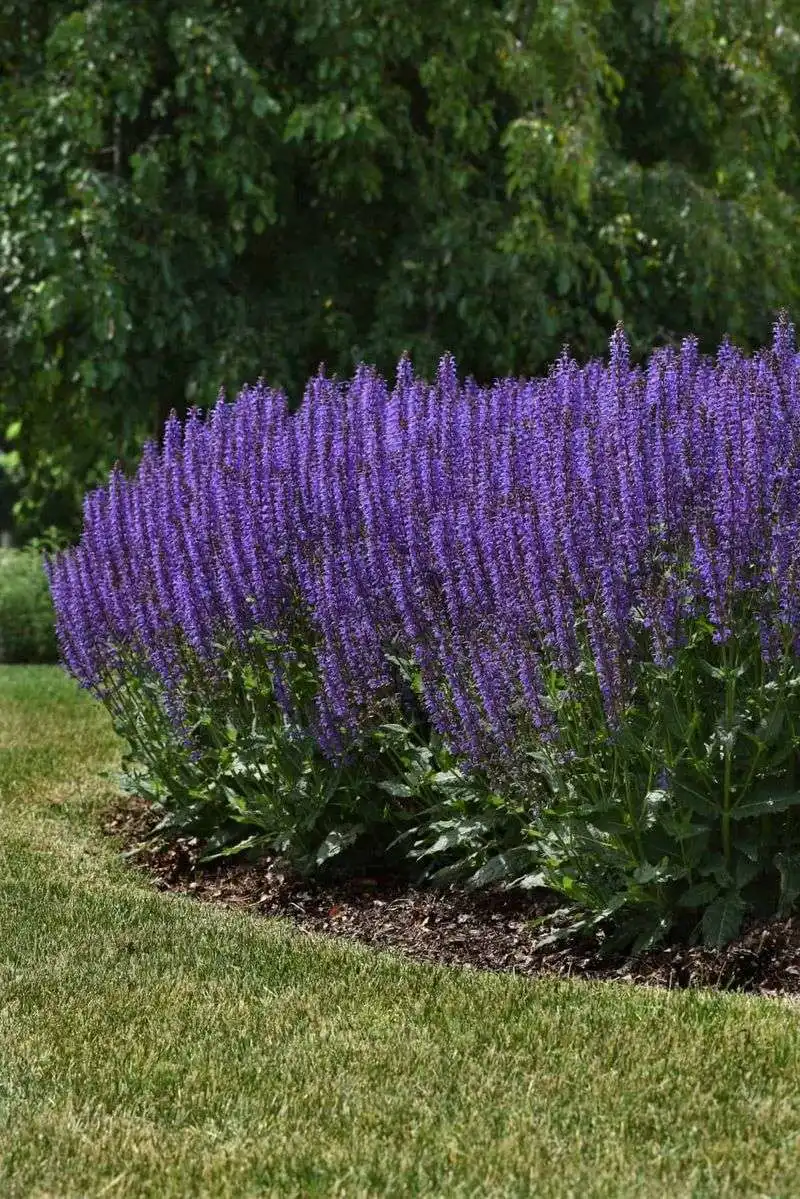
These tall spires of flowers add drama and elegance to gardens. Salvia is known for its long flowering period, from late spring to autumn. It thrives in sunny areas and well-draining soil. Bees and butterflies are drawn to its nectar-rich blooms, making it a wildlife-friendly option. Consider planting in groups for a bolder statement or alongside yellow flowers for contrast. Pruning spent flowers encourages repeat blooms. Salvia’s drought tolerance and low maintenance needs make it ideal for busy gardeners seeking color without constant care. Its versatility suits both formal and informal landscapes.
Sedum (Stonecrop)
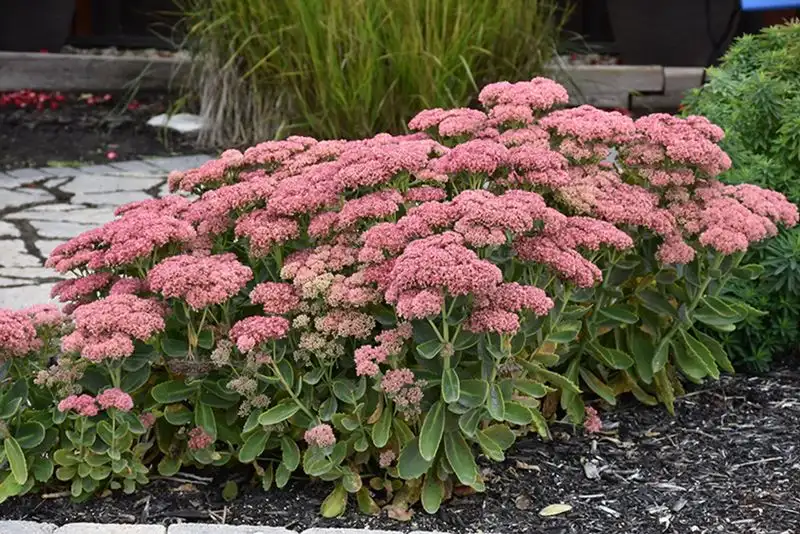
Sedum is a versatile perennial, popular for its resilience and ability to thrive in poor soil. Its succulent leaves and star-shaped flowers add interest to rock gardens and borders. In late summer, pink flowers emerge, attracting pollinators. Sedum prefers sunny locations but tolerates partial shade. Its low water needs make it perfect for xeriscaping. Use it as ground cover or in mixed planters for a textural element. As a bonus, sedum’s foliage often changes color with the seasons, offering year-round visual interest. Its adaptability makes it a must-have for diverse garden settings.
Bee Balm
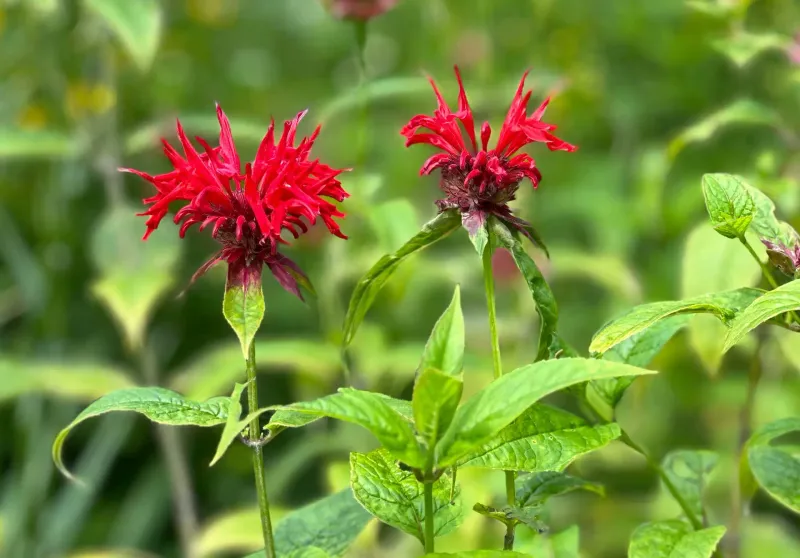
Bee balm, with its spiky, tubular flowers, is a hit among pollinators. Its vibrant red, pink, or purple blooms are particularly attractive to bees and hummingbirds. Plant bee balm in sunny locations with rich, moist soil for best growth. This perennial can spread, so give it space to flourish. Its aromatic leaves can be used for teas, adding another dimension to its appeal. Regular deadheading extends its blooming period, ensuring prolonged garden color. Bee balm is an excellent choice for adding vertical interest and a splash of vibrant color to mixed borders.
Hellebore (Lenten Rose)
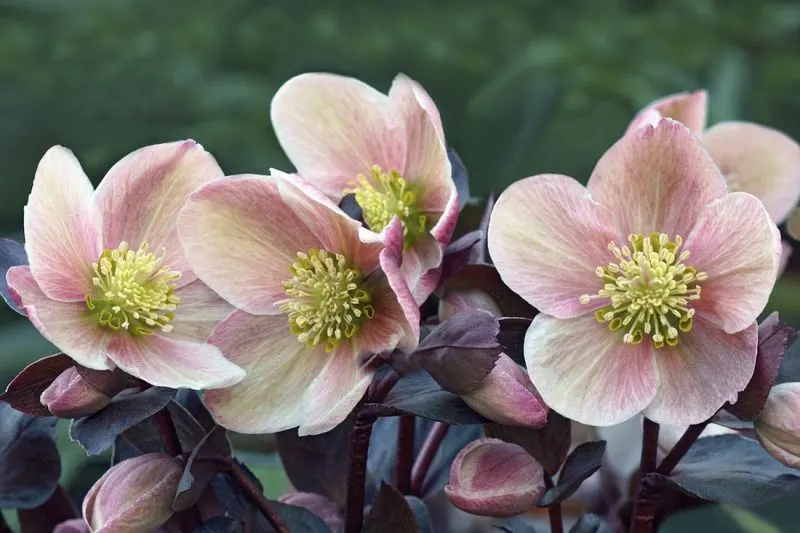
Hellebores offer early blooms, often emerging in late winter. Their nodding flowers come in shades of white, pink, and purple, providing a welcome hint of spring. Ideal for shaded areas, hellebores prefer well-drained soil rich in organic matter. Their leathery, evergreen foliage adds year-round interest. Consider planting near paths or in containers for a close-up view of their intricate blooms. These perennials are deer-resistant, making them suitable for woodland gardens. Hellebores are low maintenance, needing only occasional cleanup of old leaves to thrive and provide a splash of winter color.
Japanese Anemone
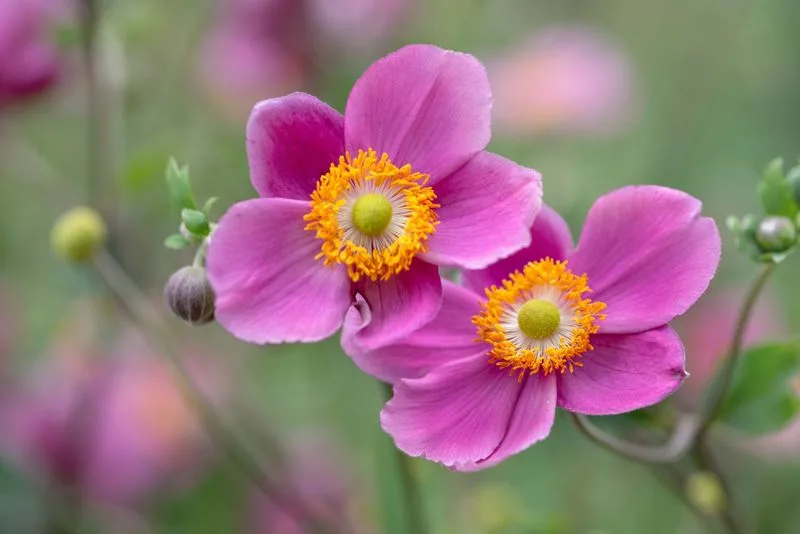
Japanese anemones add elegance to gardens with their delicate, wind-swept blooms. They thrive in partial shade, offering flowers in late summer through fall. Plant in rich, well-drained soil for best results. Their tall stems and simple flowers create a graceful presence in borders and woodland gardens. Pair them with contrasting foliage for a striking display. Japanese anemones are low maintenance, requiring minimal care once established. Despite their delicate appearance, they are hardy and can spread over time, providing an expansive display of natural beauty in shaded garden areas.
Russian Sage
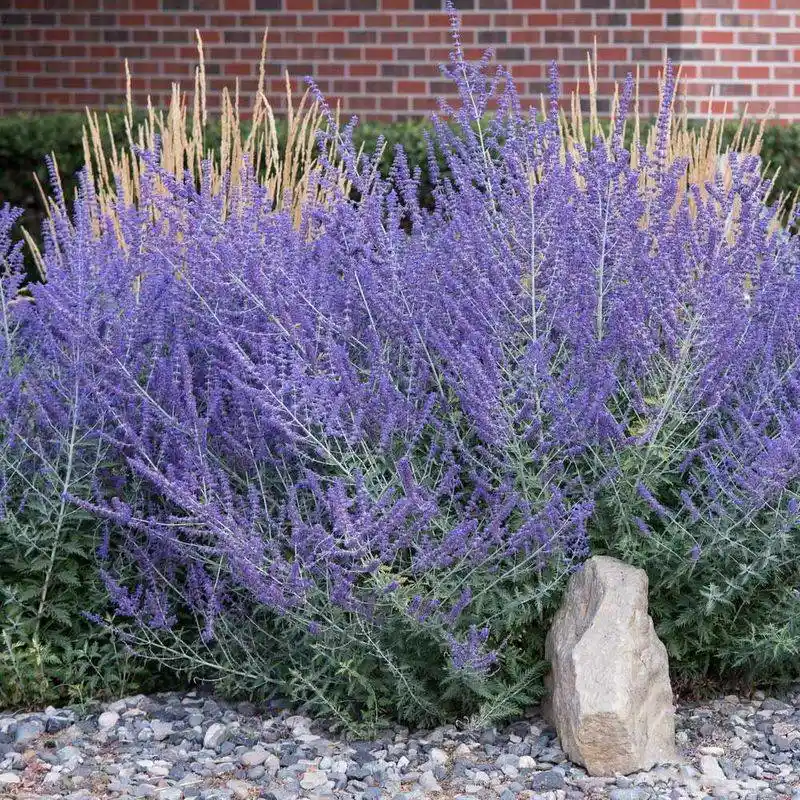
Russian sage stands out with its airy spires of lavender-blue flowers and fragrant, silvery foliage. It thrives in sunny, well-drained spots, making it a staple for drought-resistant gardens. Bees and butterflies flock to its blooms, adding life to garden settings. Use as a backdrop in borders or mixed with other perennials for layered effects. Russian sage’s long blooming season ensures vibrant color from late spring to fall. Pruning back in early spring encourages fresh growth. Its resilience and low water needs make it a favored choice for sustainable landscapes.
Astilbe
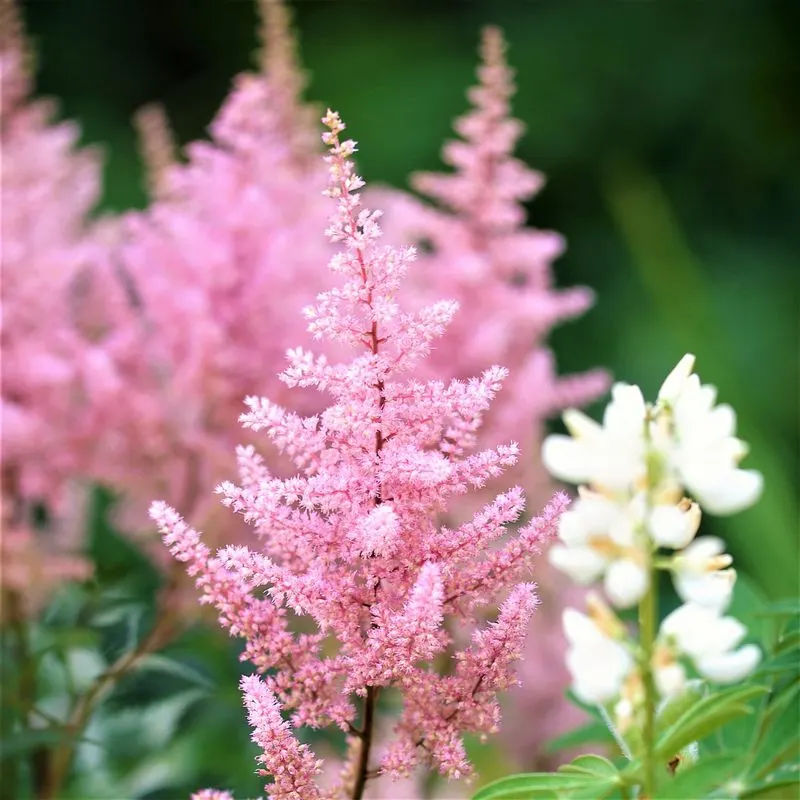
Astilbe offers feathery plumes of flowers, adding texture to shaded gardens. Their blooms come in shades of pink, red, and white, creating a soft, ethereal effect. Plant in rich, moist soil for best growth. Astilbe’s fern-like foliage remains attractive throughout the season, providing ground cover. Despite their delicate appearance, these plants are hardy and require little care. Deadheading spent flowers keeps them neat and encourages further blooms. Use astilbe in woodland gardens or borders for added depth. Their ability to thrive in shade makes them invaluable for difficult garden areas.
Yarrow
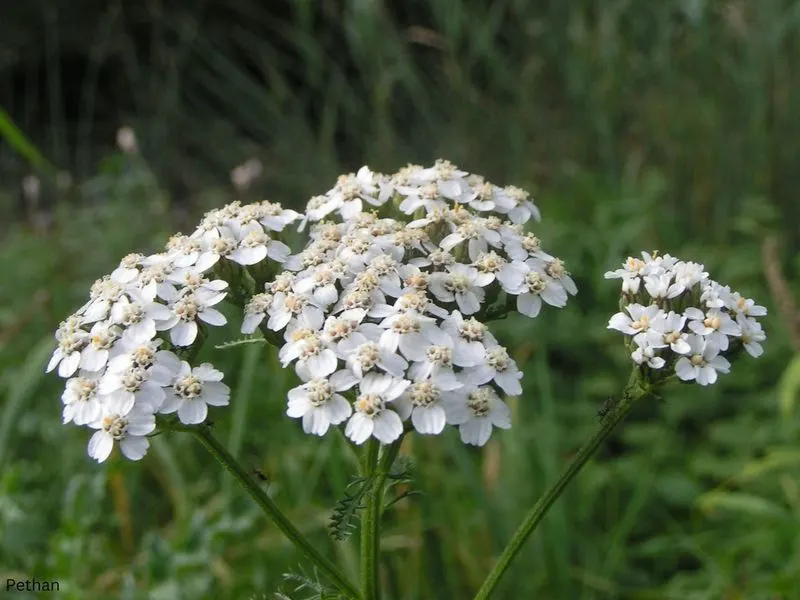
Yarrow is renowned for its flat-topped clusters of flowers and fern-like foliage. These perennials are drought-tolerant and thrive in sunny, well-drained locations. Yarrow blooms from late spring to fall, offering extended color to garden landscapes. Its flowers attract beneficial insects, making it a great choice for eco-friendly gardens. Use yarrow in meadows or as part of a mixed border. Regular deadheading maintains its appearance and prolongs blooming. Its adaptability and ease of care make yarrow a favorite among gardeners seeking both beauty and sustainability in their outdoor spaces.
Bleeding Heart
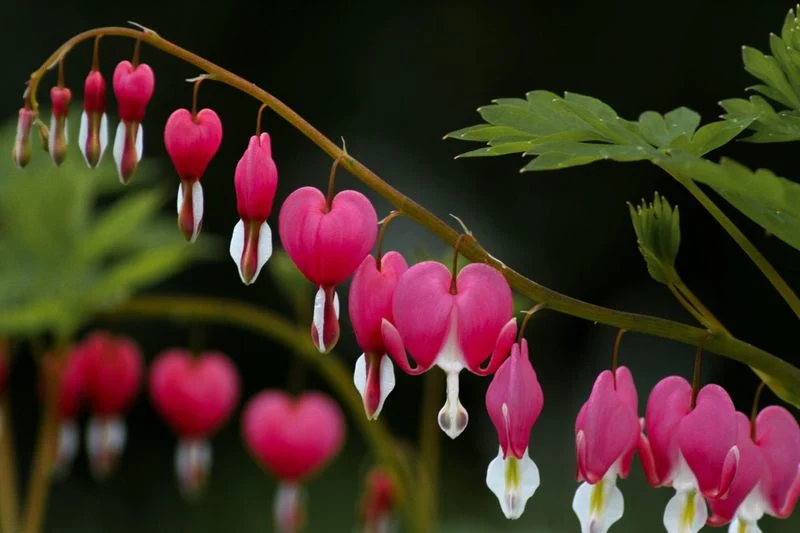
Bleeding hearts capture the essence of spring with their heart-shaped blooms. These perennials prefer shady spots with moist, well-drained soil. Their arching stems and dangling flowers create a romantic garden atmosphere. Bleeding hearts are relatively low maintenance, requiring little more than regular watering. Once flowering is complete, their foliage dies back, making room for summer perennials. Use them in woodland gardens or shaded borders for a touch of whimsy. Despite their delicate appearance, bleeding hearts are hardy and can thrive in a range of garden conditions, adding timeless charm.
Baptisia (False Indigo)
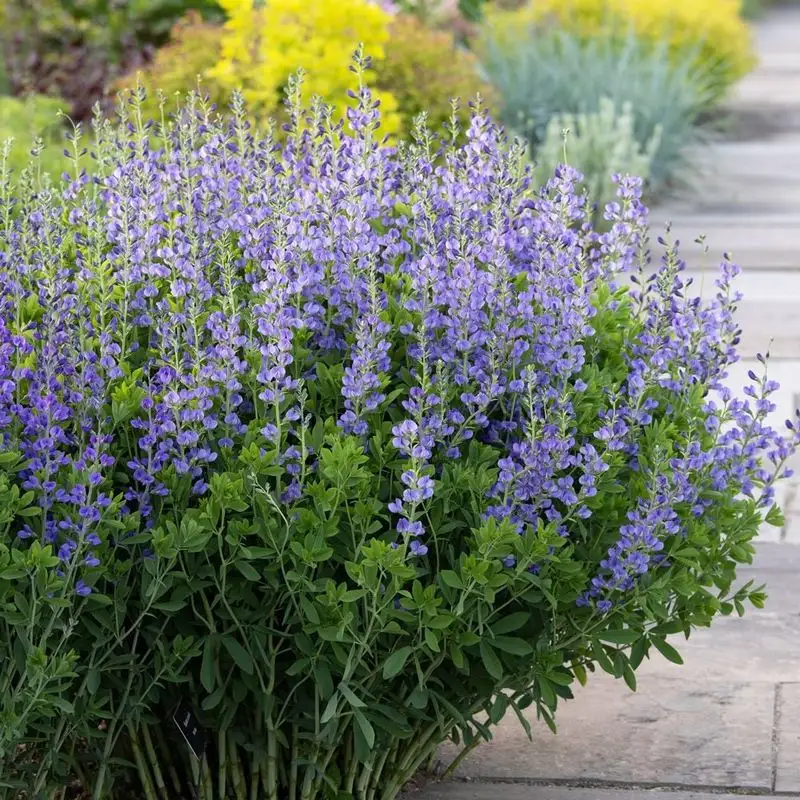
Baptisia presents striking spikes of blue flowers, reminiscent of lupines. These perennials thrive in sunny spots with well-drained soil. Once established, they are drought-tolerant and require minimal maintenance. Baptisia’s deep roots make it a long-lived addition to gardens. Their seed pods add interest long after flowering, turning black in the fall. Pair with yellow or white flowers for a complementary contrast. Baptisia is ideal for mixed borders or as a standalone specimen. Its resilience and unique blooms make it a valuable addition to perennial gardens, offering beauty with minimal effort.
Veronica (Speedwell)
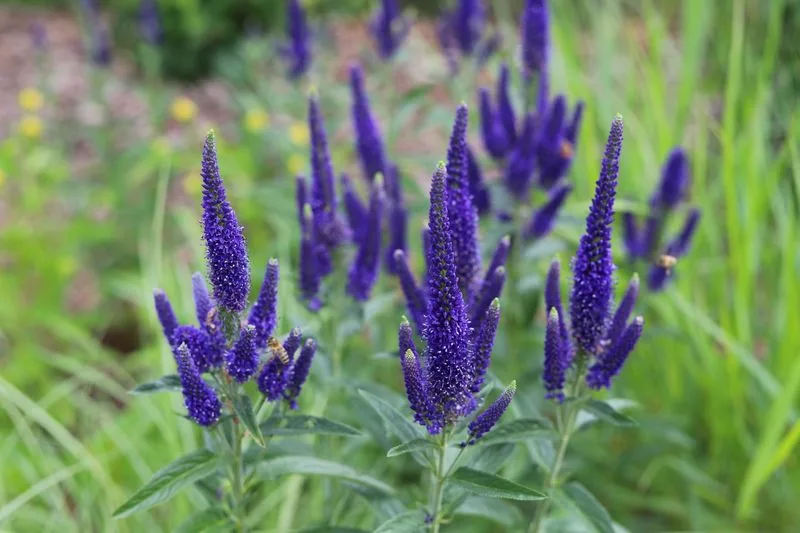
Veronica, with its tall spikes of blue, pink, or white flowers, adds vertical interest to gardens. These perennials thrive in sunny locations and well-drained soil. Their long blooming period extends from spring to summer, attracting pollinators. Deadheading encourages repeat blooms, ensuring garden color throughout the season. Veronica is versatile, suitable for borders, rock gardens, or containers. Despite their dainty appearance, these plants are hardy and low maintenance. Combine with contrasting foliage for a dramatic effect. Veronica’s adaptability and ease of care make it a garden staple for vibrant, lasting color.
Coreopsis

Coreopsis brings cheerful yellow blooms to gardens, creating a bright and inviting atmosphere. These perennials thrive in sunny locations with well-drained soil. Their long blooming season stretches from late spring to autumn, providing extended color. Coreopsis is low maintenance, requiring only occasional deadheading to prolong flowering. Use them in borders or as part of a wildflower garden for a natural look. Their drought tolerance makes them perfect for low-water landscapes. Pair with purple or blue flowers for striking contrasts. Coreopsis’ vibrant color and ease of care make it a favorite for adding sunshine to gardens.
Shasta Daisy
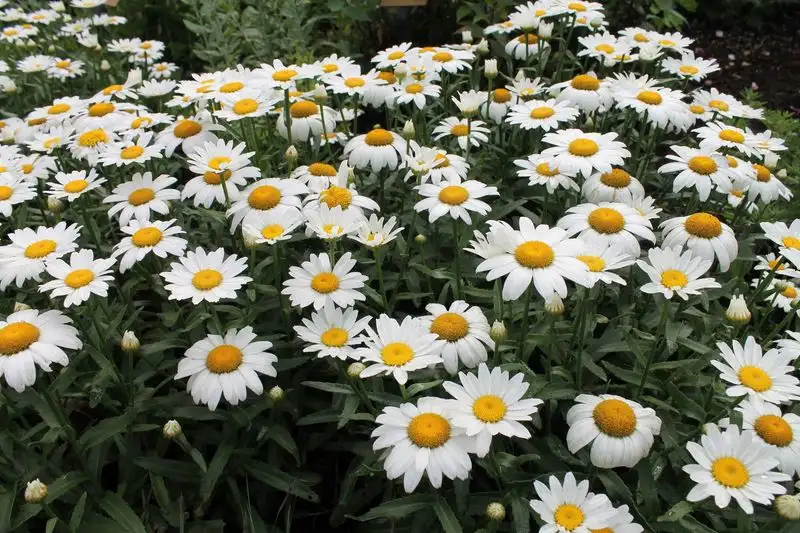
Shasta daisies are the epitome of classic garden beauty. Their bright white petals and sunny centers bring timeless elegance to any landscape. These perennials flourish in full sun and well-drained soil. They bloom from early summer to fall, making them a reliable source of color. Shasta daisies are easy to care for, requiring minimal maintenance aside from occasional deadheading. Use them in mixed borders or cottage gardens for a traditional feel. Their cheerful blooms attract pollinators, adding life to your garden. Shasta daisies are a staple for gardeners seeking simplicity and enduring charm.
Geranium (Cranesbill)
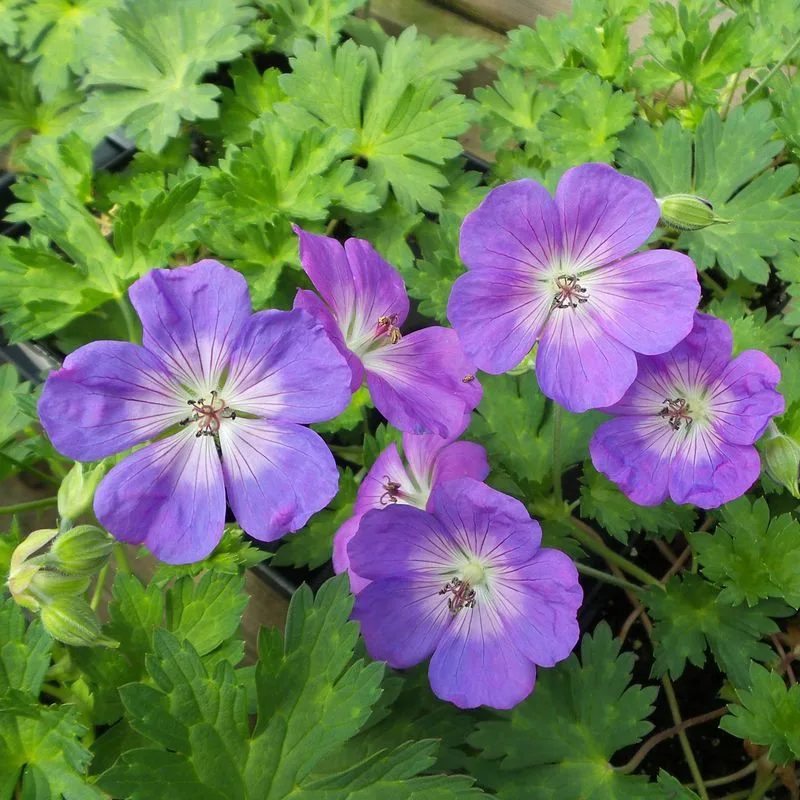
Geraniums offer delicate blooms in shades of pink, purple, and white. These perennials are versatile, thriving in both sunny and partially shaded areas. They prefer well-drained soil and are drought-tolerant once established. Geraniums’ long blooming period and compact growth make them ideal for borders and containers. Regular deadheading promotes continuous flowering. Despite their dainty appearance, these plants are tough and require little maintenance. Pair with contrasting textures for visual interest. Geraniums’ adaptability and charming flowers make them a beloved choice for gardeners seeking color and ease in their garden designs.
Fuchsia Fantasy Fern

Imagine a fern that defies the ordinary with its vibrant magenta fronds. The Fuchsia Fantasy Fern is a showstopper, bringing an unexpected splash of color to any shaded corner of your garden. Unlike traditional ferns, its hue is a conversation starter.
Plant it near a pond or alongside a cobblestone path to create a magical, fairy-tale setting. This perennial thrives in damp, shaded areas, offering low-maintenance beauty for those tricky spots where other plants might struggle.
To keep it flourishing, ensure consistent moisture and protection from harsh afternoon sun. Watch as your garden transforms into a whimsical retreat.

